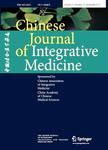Therapeutic Role of Chinese Medicine Targeting Nrf2/HO-1 Signaling Pathway in Myocardial Ischemia/Reperfusion Injury
作者机构:First Clinical Medical School Heilongjiang University of Chinese Medicine Clinical Medical School Chengdu University of Traditional Chinese Medicine Department of Cardiology the First Affiliated Hospital of Heilongjiang University of Chinese Medicine
出 版 物:《Chinese Journal of Integrative Medicine》 (中国结合医学杂志)
年 卷 期:2024年第30卷第10期
页 面:949-960页
核心收录:
学科分类:100506[医学-中医内科学] 1006[医学-中西医结合] 1005[医学-中医学] 100602[医学-中西医结合临床] 10[医学]
基 金:Supported by Talent Project of Education Department of Heilongjiang Province (No.15011220094)
主 题:Chinese medicine mechanisms myocardial ischemia/reperfusion injury nuclear factor E2-related factor 2/heme oxygenase-1 signaling pathway
摘 要:Acute myocardial infarction(AMI), characterized by high incidence and mortality rates, poses a significant public health threat. Reperfusion therapy, though the preferred treatment for AMI, often exacerbates cardiac damage, leading to myocardial ischemia/reperfusion injury(MI/RI). Consequently, the development of strategies to reduce MI/RI is an urgent priority in cardiovascular therapy. Chinese medicine, recognized for its multi-component, multi-pathway, and multi-target capabilities, provides a novel approach for alleviating MI/RI. A key area of interest is the nuclear factor E2-related factor 2(Nrf2)/heme oxygenase-1(HO-1) pathway. This pathway is instrumental in regulating inflammatory responses, oxidative stress, apoptosis, endoplasmic reticulum stress, and ferroptosis in MI/RI. This paper presents a comprehensive overview of the Nrf2/HO-1 signaling pathway s structure and its influence on MI/RI. Additionally, it reviews the latest research on leveraging Chinese medicine to modulate the Nrf2/HO-1 pathway in MI/RI treatment.



